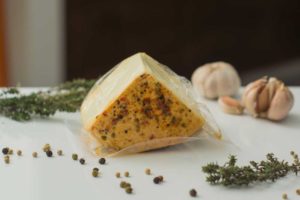June 3, 2022
If you have ever considered using Co-extruded Multilayer Packaging Films instead of traditional laminated packaging materials, you’ll appreciate how they provide many benefits, including excellent puncture and heat sealability, water and gas resistance, and cost-effectiveness. The process also involves the use of explosive and flammable organic solvents. Read on for more information. This article explains the process and its advantages.
Co-extruded Multilayer Packaging Films Replace Traditional Laminated Packaging Materials
The advantages of Co-extruded Multilayer Films over other laminated materials include their high barrier properties and low processing costs. In addition, they can be produced more efficiently, reducing raw material costs. Several benefits of Co-extruded MLFs are also evident in food packaging, including improved shelf life and enhanced food preservation properties. This article will highlight some of the benefits of Co-extruded Multilayer Laminated Films and explain why they are an excellent replacement for traditional packaging materials.
Compared to laminated packaging materials, Co-extruded Multilayer Films are a much stronger and more flexible alternative to conventional materials, which are expensive. Its flexibility and superior barrier properties allow for a wide variety of multilayer structures, and it is suitable for non-plastic materials, such as corrugated cardboard. In addition to this, Co-extruded Multilayer Laminates are also more environmentally friendly.
Multilayer Packaging Films – Heat Sealability, Puncture, Cold, Water & Gas Resistance
Among its many benefits, co-extruded multilayer packaging film has excellent gas, puncture, water, and heat resistance. Its excellent puncture, heat, and water resistance make it suitable for sealing various kinds of containers. Its good permeability property is determined by measuring the movement of gas through the film. In addition, gas-permeability is an important parameter when considering packaging.
It is available in a variety of shapes and sizes. The basic structure of the co-extruded multilayer packaging film is a combination of three layers, including an oleoresinous core, and two solid layers. Its excellent gasketing and puncture resistance make it suitable for a variety of applications, including liquid detergent, cough syrup, and other liquids.
Thermoplastic polymers are a common class of plastics. These materials are derived from natural resources. Liquid fluorocarbons are used as propellants for aerosols, while solid fluorocarbons are known as thermoplastics.

Multilayer Packaging Films are Cost-Effective
Among the advantages of cost-effective co-extruded multilayer films is their increased performance. The film contains random polypropylene copolymer and outer and inner skin layers of ethylene interpolymer. The two types of film exhibit improved tear ratio, haze, and hot tack, respectively, when compared to a standard three-layer film.
Multilayer films have a core layer of random polypropylene copolymer that is bonded to adjacent skin or intermediate layer. The film is then laminated to a secondary substrate, such as polyester, polyamide, or a combination of any of these. The films can also include a vapor-deposited barrier layer or a thin silicon oxide (SiOx) or aluminum oxide (AIOx) layer and may include three or more layers.
Multilayer Packaging Films use Flammable and Explosive Organic Solvents
In the dry composite film-forming process, a significant amount of flammable and explosive organic solvents are discharged into the air. Proper handling is imperative to prevent hazardous chemical exposure to the air and workers. In addition, semi-finished products can be contaminated during storage and transportation. This process has several advantages over conventional film-forming methods.
In Conclusion
The process of lamination involves bonding a multilayer co-extruded packaging film to a substrate, using heat or pressure. Laminated films have multiple layers of materials, providing an improved mechanical, barrier, and aesthetic properties. The application method varies depending on the desired property enhancement.

